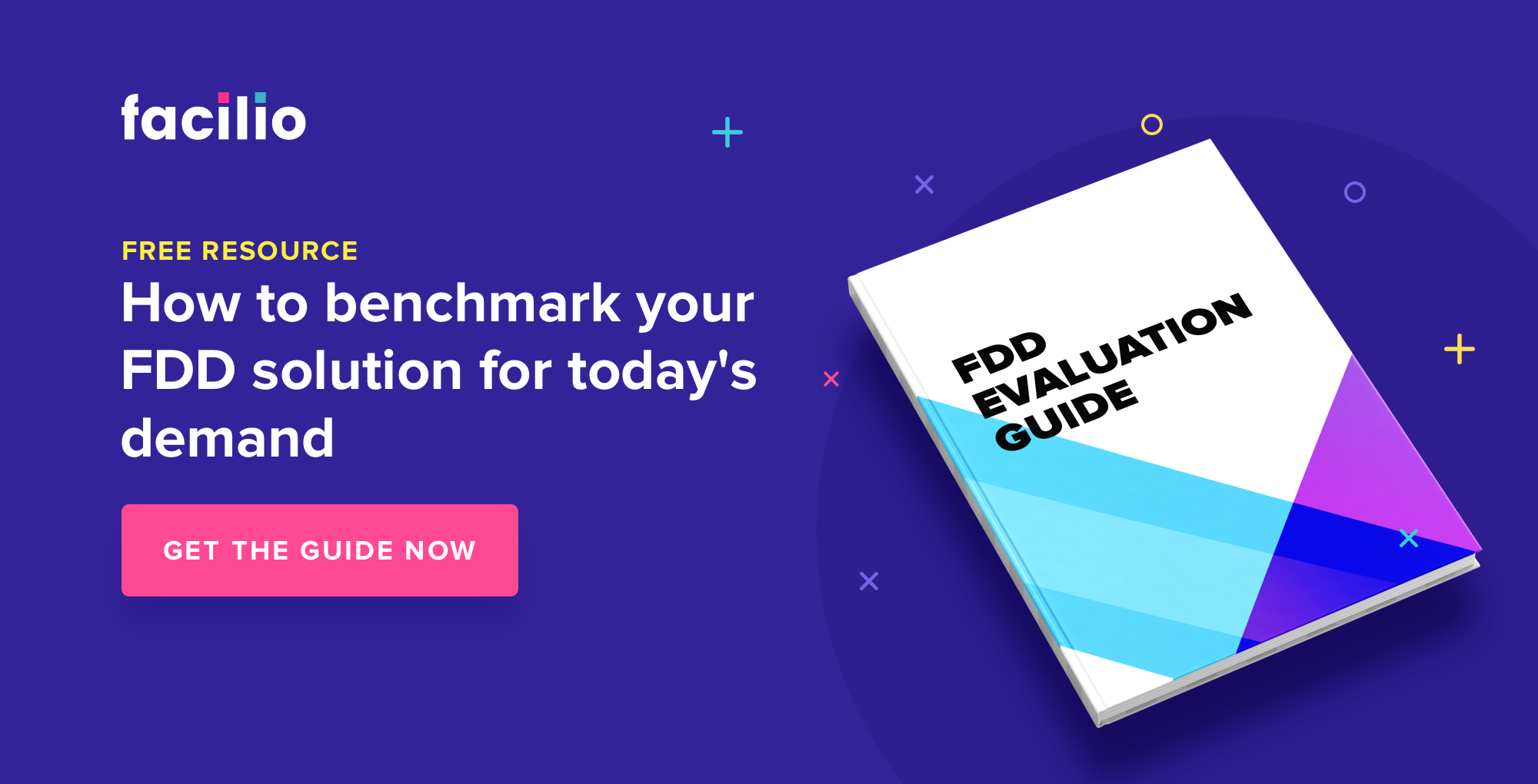
We’re seeing a surge in Fault Detection and Diagnostics (FDD) solutions across the buildings industry. This is unsurprising, as the role of FDD in achieving operational efficiency is becoming more and more clear.
What is surprising is the pace of adoption in the CRE landscape—it is remarkably slow.
This boils down to hesitant buyers. Many buyers are confused and face information barriers obscuring needed answers to questions like:
- Will there be guaranteed, ongoing ROI?
- What hurdles might I face with a tool that doesn’t fit well with my ops?
- Are there important things I’m overlooking while evaluating an FDD for my portfolio?
So, how will the FDD trend pan out? And what information could buyers use to effectively evaluate their FDD options? Let’s explore.
The growing need for advanced FDD
Today, there’s a shift in operational approach towards using technology to maximize building performance. And as a phenomenon that can drive continuous value in operations, advanced FDD is poised to benefit property operators immensely.
However, it’s important to understand that the value of an FDD solution does not lie in merely identifying and investigating performance inefficiencies.
“The biggest challenge here is in driving action from FDD,” points out James Dice, a leading expert in data analytics for smart buildings. “With traditional solutions functioning as a human-in-the-loop tool, going from diagnostics to action to verification is not an easy route. More so when they are greatly limited by [manual] operating procedures”, he adds.
Get the Full Guide: How to choose the right FDD solution for your portfolio
An advanced FDD solution goes beyond HVAC energy management and integrates with building operations, and command and control systems. In doing so, the scope of efficiency expands from energy to unified portfolio-wide control.
“FDD platforms need to automate tedious operational processes and keep providing value year after year. And to do that they need to affect all facets of operations and pull in more than just HVAC”, says Dice.
Choosing an FDD: Product vs. Service
With the potential to significantly improve efficiency across the portfolio, FDD is likely here to stay. This means buyers need guidance on how to choose the best FDD product or service for their portfolio.
In our experience, there are 6 key areas operations teams should consider when evaluating FDD solutions—and the first is product versus service. Let’s break down this aspect of your FDD evaluation to help you decide what will work best for your business.
Whether you choose an FDD product or service depends on two key factors:
- Availability of time
- Technical resources
As the system that predicts and alerts you to performance anomalies, you should expect your solution to require minimal technical expertise. But technical knowledge is often perceived as an obstacle to choosing a product over service, and many people believe that the learning curve on analytics is pretty steep.
On the flip side, with an FDD service, you’ll be bound by your service provider and will miss out on ownership of data for precise evaluation of your overall operational performance. A product can give you visibility and freedom to understand property performance in multiple ways.
Questions to ask your prospective vendors:
- Do you need technical skills and/or HVAC domain knowledge to operate the system?
- Can the tool be seamlessly installed and maintained in-house?
- Does it allow you to set up a DIY configuration and control of building data and analytics?
How to Choose an FDD solution: The Full Guide
To help property owners and operators evaluate their options and informed decisions, we created a guide that elaborates on 6 important criteria, including:
- Product vs. service
- Cloud vs. on-premise
- Flexibility
- Ease of switching
- Operational intelligence
- Total cost of ownership
By the end of the guide, you’ll know everything necessary to evaluate FDD solutions confidently. And you’ll fully understand which aligns best with your portfolio’s operational model—while also keeping your buildings healthy and increasing the efficiency of energy-consuming systems.



